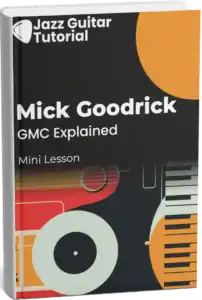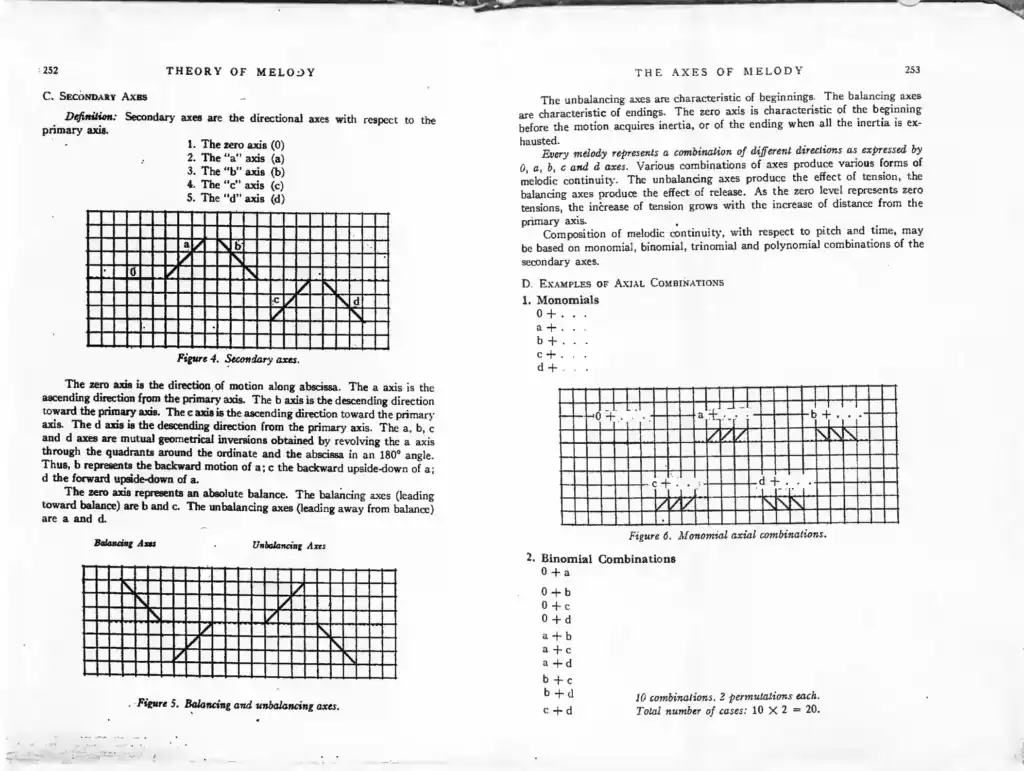Mick Goodrick was more than just a jazz guitarist—he was a deep musical thinker. Known for his unconventional approaches to harmony and improvisation, he inspired generations of players with ideas that challenged traditional guitar logic.
In this post, we’ll explore one of his most innovative contributions to modern jazz guitar: Generic Modality Compression (GMC). Whether you’re looking to expand your voicing vocabulary or break away from root-based thinking, GMC offers a new way of understanding and applying harmony on the guitar. This method revolutionized the Mick Goodrick GMC approach, bridging traditional and avant-garde techniques.

Unlock your free ebook on Mick Goodrick GMC approach. Fill out the form below to get it!
What Is Generic Modality Compression by Mick Goodrick?
Mick Goodrick developed Generic Modality Compression (GMC), a harmonic concept that encourages guitarists to remove the root of a scale and unlock new harmonic possibilities.
The result is a more modern, open sound, ideal for jazz guitarists looking to move beyond traditional chord shapes.
Here’s how GMC works:
- Start with a 7-note scale (for example, D Dorian).
- You remove the root, leaving you with 6 notes—a hexatonic scale.
- Divide those 6 notes into two groups of 3 notes each.

These 3-note “cells” become the foundation for building voicings, melodic lines, and compositional ideas. You can think of them like triads, but extracted from a rootless, compressed mode—hence the name Generic Modality Compression.
Why Did Mick Goodrick Create GMC?
One of the common issues Mick Goodrick observed in his students was the tendency to double the root of a chord. In a band setting, especially when a bass player is present, this can create unnecessary clutter in the low end.
By removing the root, you create more space for the bass player to do their job, while opening up new tonal colors on the guitar. This approach is central to many Mick Goodrick guitar techniques, reflecting the core of Mick Goodrick GMC strategies in music theory.
The 10 GMC Possibilities (D Dorian Example)
Apply GMC to D Dorian by removing the root (D), leaving you with E, F, G, A, B, and C. You can group these six notes into 10 unique combinations of two 3-note structures.
Each combination yields new melodic and harmonic material you can use in improvisation and comping.
(The numbers below the scale is just to help you understand the combination of the notes when dividing in two 3-note structures)

These possibilities form a modular system of building blocks that help you break free from vertical thinking and explore horizontal motion on the fretboard.
The Mathematical Influence: Schillinger and Mick Goodrick
Mick Goodrick was heavily influenced by Joseph Schillinger, a theorist known for his mathematical approach to composition. The Schillinger System used numbers and formulas to generate musical structures—an idea that deeply resonated with Goodrick.
Many Mick Goodrick guitar ideas, including GMC, are built on similar principles: create a clear system, then explore it artistically. Notably, the Mick Goodrick GMC philosophy aligns with these mathematical concepts.

Taking GMC Further: Inversions and Spread Voicings
GMC isn’t limited to just one shape. Once you’ve learned the basic 3-note cells, you can expand them in a variety of ways:
- Inversions: Rearranging the order of notes in each 3-note cell creates different melodic and harmonic textures.
- Spread voicings: Move the middle note up an octave to create a wider, more modern sound.
These techniques allow you to apply GMC in comping, soloing, arranging, and composition, further enriching the Mick Goodrick GMC application.


Applying GMC to a Jazz II-V-I Progression
GMC can be used both harmonically and melodically in a II-V-I progression. For example:
- Chord voicings: Use the 3-note GMC voicings over Fm7 – Bb7alt – Ebmaj7.
- Improvisation: Construct lines using the 3-note GMC Structures over the II V I.
This approach adds a new flavor to your jazz playing, allowing you to break out of typical scale and arpeggio patterns using the Mick Goodrick GMC method.


Conclusion: Why GMC Matters for Modern Jazz Guitarists
Mick Goodrick didn’t just teach technique—he taught a way of thinking. Generic Modality Compression reflects his lifelong pursuit of deeper musical understanding, and his desire to give students tools that encourage exploration and creativity. This lasting impact is embedded in the Mick Goodrick GMC philosophy.
If you’re looking to expand your modern jazz guitar vocabulary, GMC is an essential concept worth studying and applying.


